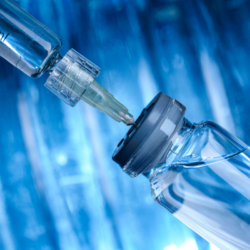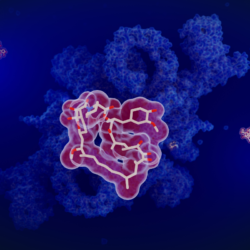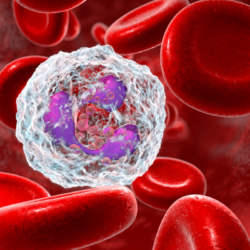Cerebrovascular accidents (CVA) are acute (sudden) complications of vascular disease , caused by a stop of the blood supply in a brain territory (cerebral infarction or DALY – ischemic) or a rupture of a vessel (hemorrhage). cerebro-meningeal or AVCH – hemorrhagic). They are thus the third leading cause of death in France and the leading cause of disability. Their most common manifestation is hemiplegia (paralysis of a hemibody).
What is a stroke?
In popular parlance, a stroke is also called a “stroke” or “stroke”. The number of new annual cases is estimated at 100,000 for France and there are 35,000 annual recurrences in former patients. The number of people with stroke is also estimated in France at 500,000. They are notably a little more frequent in men (4 men for 3 women) and occur more often in winter . However, the number of cases increases with age, the incidence being 40 per 1000 beyond 85 years. The brain injury actually leads to various impairments. If the motor deficit is the most usual, other disorders are observed: sensitivity disorders, various impairments of cognitive functions (language, comprehension, memory, perception of time and space) …
What are the risk factors for having a stroke?
Here are the modifiable factors that contribute to increasing the risk of stroke :
- Arterial hypertension
- Smoking
- Dyslipidemia
- Diabetes
- Insulin resistance
- Abdominal obesity
- Excessive alcohol consumption
- Lack of physical activity
- High risk diet ( high in saturated fat, trans fat, and calories )
- Psychosocial stress ( depression )
- Heart disorders (especially disorders that predispose to emboli, such as acute myocardial infarction, infective endocarditis, or atrial fibrillation)
- Hypercoagulability (mainly thrombotic stroke)
- Intracranial aneurysms (subarachnoid hemorrhage only)
- Taking certain toxic substances ( cocaine, amphetamines )
- Vasculitis
Non-modifiable risk factors include the following :
- History of stroke
- Great age
- Family history of stroke
- Genetic factors
How to readjust to life after a stroke?
Rehabilitation is ultimately an important part of the post-stroke continuum.
Acute phase rehabilitation:
The acute phase is the period immediately following the onset of stroke symptoms . The person with stroke should be treated in a stroke unit in an acute care center, that is, a physically separate and well-defined care unit, with staff with expertise in rehabilitation and stroke, integrating a coordinated multidisciplinary team, offering training and information programs to consumers and their caregivers , and using agreed protocols based on evidence. The early rehabilitation services offered in these units consist mainly of:
- The initial assessment of physical, cognitive and communication disabilities, performed as soon as possible after admission, ideally within the first 24 to 48 hours.
- Determination of rehabilitation needs including psychosocial and communication needs.
- Positioning to prevent complications ( shoulder pain ).
- Rapid mobilization, within 24 hours, which could help reduce the use of rehabilitation services.
- Screening for dysphagia, by clinical evaluation at the bedside or by instrumental method, supplemented by a full evaluation by a speech-language pathologist or a trained specialist if dysphagia is suspected.
Rehabilitation in the post-acute phase:
Clinical practice guidelines recommend that all people with stroke who require specialized in-house rehabilitation services should indeed be admitted to a stroke rehabilitation facility, regardless of the severity of the stroke .
The user should be transferred from the acute care center (stroke unit) to the rehabilitation facility as soon as their medical condition is stable. In particular, users with severe impairments could benefit from a slow recovery approach and those with mild impairments could be followed on an outpatient basis or at home .
Discharge planning should begin as soon as possible after the patient is admitted . In addition, we must offer rapid leave with support to people with mild or moderate impairments, as soon as they can safely return to their living environment or home, provided they have access to external rehabilitation services or at home, comprehensive and interdisciplinary as well as with the help of family caregivers or support services .
Reintegration into the living environment:
Clinical practice guidelines recommend that after discharge from an acute care facility or rehabilitation facility , people with stroke otherwise continue to have access to appropriate rehabilitation services at their needs on an outpatient basis or at home .
Driving, leisure, sexuality, return to work, family responsibilities as well as social relationships are key elements of social participation and they must be addressed by rehabilitation professionals by pursuing the objectives established in the phases. previous studies and with an emphasis on social integration.
Regular and continuous follow-up offered to people living at home after a stroke therefore makes it possible to assess their recovery , prevent their deterioration, maximize their functional and psychosocial status and improve their quality of life.
Are there herbal remedies to improve the quality of life after stroke?
Ginseng :
The ginsenoside Rd reduces ischemic brain injury after stroke (stroke), and confirms its neuroprotective activity, including inhibiting microglial activation and inflammation.
Turmeric :
The turmerone contained in turmeric is neuroprotective and is said to improve recovery from brain damage after stroke, because it decreases neuroinflammation and improves the mobilization of endogenous stem cells.
Medical bibliographic sources and clinical trials :
- Kernan WN, Viscoli CM, Furie KL, et al: Pioglitazone after ischemic stroke or transient ischemic attack. N Engl J Med, 2016
- Park SY, Kim YH, Kim Y, Lee SJ. Aromatic-turmerone’s anti-inflammatory effects in microglial cells are mediated by protein kinase A and heme oxygenase-1 signaling. Neurochem Int. 2012
- Poser SW, Androutsellis-Theotokis A. Spicing up endogenous neural stem cells: aromatic-turmerone offers new possibilities for tackling neurodegeneration. Stem Cell Res Ther. 2014
- Wei-Yi O. et al., Protective effects of ginseng on neurological disorders, Front Aging Neurosci., 2015
- Jiang Y. et al., Neuroprotective effect of water extract of Panax ginseng on corticosterone-induced apoptosis in PC12 those and its underlying molecule mechanisms, J Ethnopharmacol., 2014







